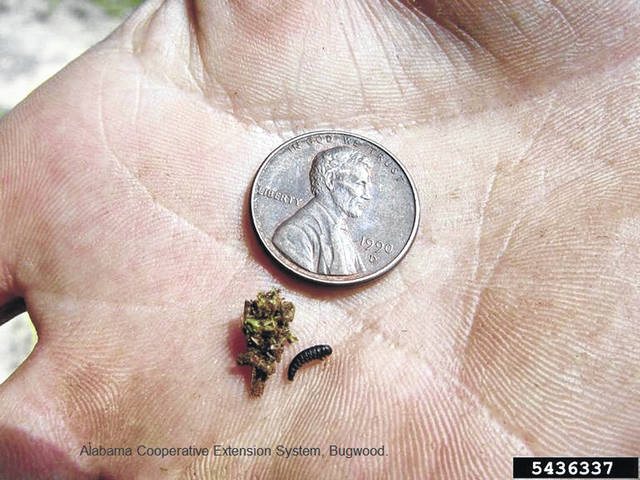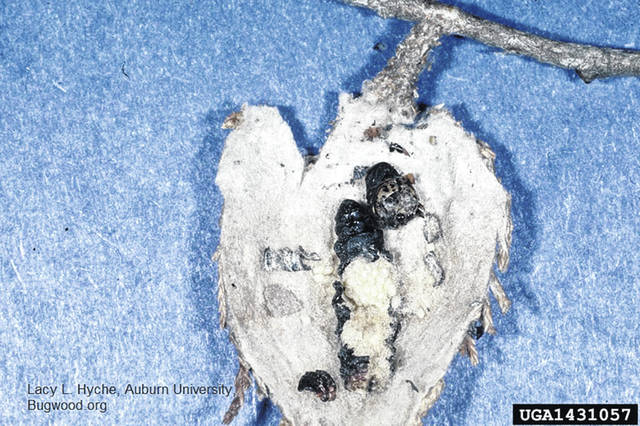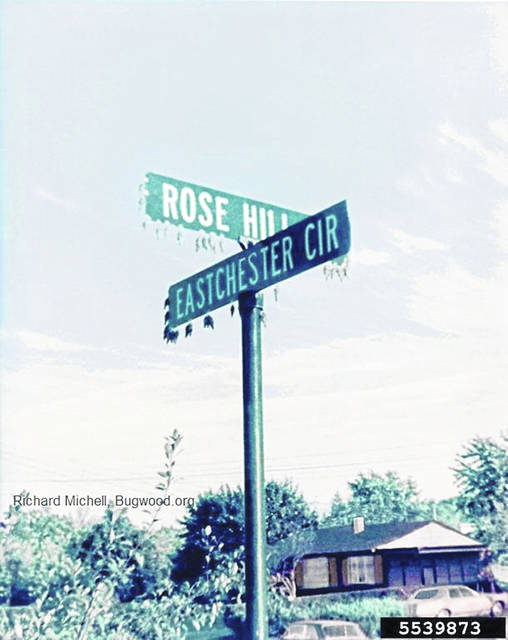


What to do about bagworms is currently a frequently asked question here in the OSU Extension Office.
The distinctive mature bags (1 and a 1/2 to 2 and a 1/2 inches) made up of foliage, twigs, and plant debris, are large enough and the damage extensive enough in late July and August that homeowners are beginning to notice them. They prefer arborvitae and red cedar juniper but they will attack other conifers and some deciduous trees. Sara Creamer OSU Extension Master Gardener and Financial Management Program Coordinator identified them on elm recently.
Bagworms only have one generation a year and over winter as eggs in the bag. There may be as many as 300 to 1,000 eggs. The eggs hatch in late May or early June and the larva are the size of a comma (,). No wonder it takes until August before a homeowner notices them and even then, it is often confused with a pinecone. The bagworm begins making and camouflaging the bag as soon as it finds a suitable host and may crawl to its host. In addition, it makes a silk thread that catches the wind and moves it to a new plant.
Females stay in their bag to pupate and remain larva like. Males pupate, develop wings, and emerge to mate with a female. The pupa stage of development is a transitional dormant stage between the larva and the adult. The bagworm securely attaches the bag to the plant with a silk thread. Once she has mated, the body of the female pupa becomes a mummified protection around the eggs.
If the infestation is caught soon enough and the host plant is not too tall, mechanical hand picking works.
“Perhaps you can pay the kids or grandkids a nickel for each bag they pick off,” Creamer said. “Be sure to destroy the bags.”
The bag is an effective raincoat and protects the larvae from contact pesticide sprays. Ingested stomach poisons control the pest but since the larvae only feed for about six weeks, there is a narrow window for control by sprays.
The host plant is often too tall to pick off all the bags or spray. A reputable Certified Arborist or landscape company could spray the tree at the appropriate time. Just be aware that this late in the season spraying will not be an effective control. The larvae are no longer feeding. If they are mature enough, a spray can cause them to pull into their bag and pupate early. The best control by chemical means occurs in June.
“Since the bag of the bagworm resembles a pinecone and you cannot do anything about them anyway, you might consider spraying them gold on the tree and decorate for Christmas early,” Creamer said. “At least now, you will be ready for the spring hatch and can get ahead of them in the spring. Good luck.”
For more information, contact Sara Creamer at (740) 335-1150 or [email protected].




